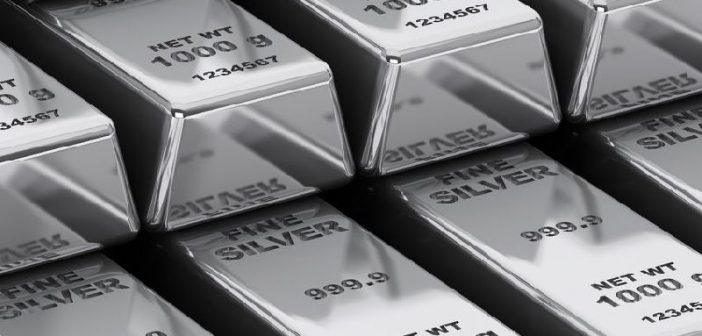In recent years, digital silver has gained increasing attention among Indian investors as a more attractive alternative to gold. This shift is largely due to silver’s industrial demand, lower investment cost, and its potential for higher returns. Here’s a detailed analysis of why Indians should consider increasing their investment in digital silver instead of gold, along with the pros and cons of both options.
Rising Popularity of Digital Silver
Silver has historically been considered the “poor man’s gold,” but its role has evolved with modern industrial applications, particularly in electronics, solar panels, and green energy technologies. This makes silver more closely tied to industrial growth than gold, which remains more of a store of value.
In 2024, silver investments in India have gained significant traction, with silver ETFs (Exchange-Traded Funds) recording returns of nearly 19.7%, outpacing gold’s 12.8% returns for the same period. Digital silver offers the advantage of lower entry costs, making it more accessible for retail investors who may find the high cost of gold prohibitive.
Why Silver Over Gold?
- Affordability and Accessibility
Digital silver is much more affordable than gold, allowing small and retail investors to start investing with a relatively smaller capital. This opens up an avenue for portfolio diversification, especially for those who might not have the budget for larger gold investments. Silver’s per-unit cost is lower, making it easier to accumulate in larger quantities. - Higher Growth Potential
Silver has a higher potential for price appreciation due to its demand in various industries. As India and other global economies continue to prioritize renewable energy and high-tech manufacturing, silver demand is expected to grow. Its use in solar panels and electric vehicles positions it to benefit from the ongoing green energy shift. In contrast, gold is more static in its demand, primarily driven by jewelry and investment markets. - Digital Convenience
Just like digital gold, digital silver allows investors to avoid the hassles of storage and security associated with physical silver. Platforms such as digital wallets, brokerage apps, and ETFs offer easy access to invest in silver without worrying about purity, insurance, or theft. - Volatility and Risk
While gold is traditionally viewed as a safe haven, silver is more volatile due to its industrial use. However, for investors with a higher risk appetite, this volatility can translate into higher returns during market upswings.
Pros of Digital Silver Investment
- Diversification: Silver offers exposure to both precious metals and industrial commodities, helping investors diversify their portfolios across different economic sectors.
- Lower Entry Cost: Digital silver allows investors to enter the market with a much lower initial investment than gold.
- Liquidity: Like gold, digital silver is easily traded on online platforms, allowing for quick buying and selling.
- Growth in Industrial Demand: The rising use of silver in industries, particularly in technology and renewable energy, ensures that the demand for silver will continue to grow.
Cons of Digital Silver Investment
- Volatility: Silver prices are significantly more volatile than gold, which can result in greater price swings in short time frames.
- Less Safe Haven: Unlike gold, silver is not perceived as a primary store of value during economic uncertainty. This means silver may not perform as well as gold in times of financial crises or when inflation spikes.
Comparing Gold vs. Silver
| Criteria | Gold | Silver |
|---|---|---|
| Price Stability | More stable | More volatile |
| Industrial Use | Limited | Extensive (solar, electronics, etc.) |
| Investment Cost | High | Lower |
| Returns in 2024 | ~12.8% | ~19.7% |
| Liquidity | High | High |
Where to Invest in Digital Silver?
- Silver ETFs: Exchange-Traded Funds are one of the most popular avenues for digital silver investment. With ETFs, you gain exposure to silver prices without actually holding physical silver. Silver ETFs have already attracted ₹5400 crore in assets in India and are set to grow further.
- Digital Silver on Platforms: Various digital investment platforms offer the option to purchase silver in fractional quantities, stored in secured vaults. Popular options include mobile wallet apps and brokerage platforms.
- Commodity Trading: Investors can trade silver futures and options in the commodities market to benefit from short-term price movements. However, this requires a better understanding of market trends and risk tolerance.
Why Digital Silver Could Outshine Gold in 2024 and Beyond
The future of silver investment looks promising due to its strong industrial demand, particularly in green technologies like solar power. The global shift toward renewable energy ensures that silver will remain a critical component in various high-growth industries. Meanwhile, gold remains largely confined to jewelry and traditional financial products, offering limited upside potential unless there is a significant economic downturn.
For Indian investors, digital silver provides an accessible, lower-cost entry point with potential for higher returns, especially as India continues its push toward industrial growth and technological advancements. However, the key is to monitor market trends closely and understand the cyclical nature of commodities.
In conclusion, digital silver presents a strong case for diversification, especially for small and retail investors. Its industrial growth prospects, combined with easy digital access, make it a compelling alternative to traditional gold investments.






